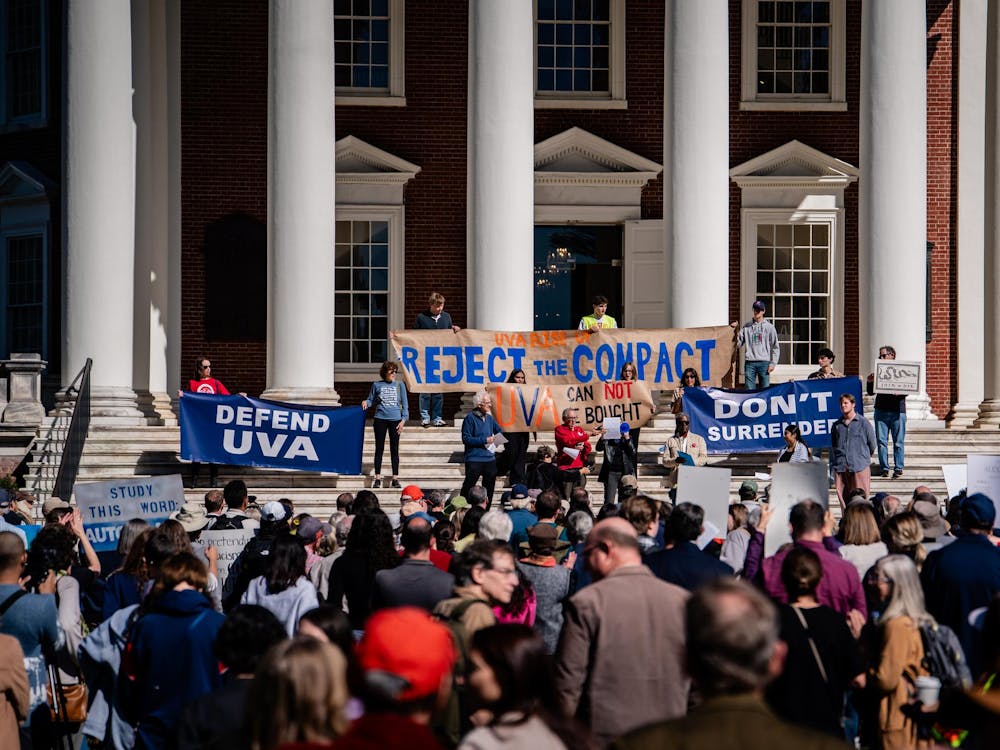This summer, I have had the distinct pleasure and privilege to volunteer with the Kluge-Ruhe Aboriginal Art Museum. Last week, the staff had a farewell lunch for the summer interns. I felt wholly comfortable with the entire museum staff, and during the lunch I noticed that everyone in attendance was female. It hadn’t occurred to me the entire summer, but immediately I realized how important that fact was to me. It is rare to find an all-female staff in many professions, and in the field of academia it feels especially meaningful. That experience prompted me to write this column. It profoundly impacted me to work with so many smart, creative, passionate women this summer, because I could see myself eventually emulating them in my personal and professional life. Because we were all women, we shared common experiences that men simply would not understand. We empathized with each other’s problems and concerns and felt similarly about topics ranging from politics to the study of history to how to handle romantic relationships. It was not difficult to imagine myself as one of them in a few years —a young professional in an academic field of work — because I already saw so much of myself in them.
That is why representation is so important. Increasing gender, socioeconomic, racial and ethnic diversity in academic staffs and elsewhere is about much more than statistics or looking attractive on paper. It is about helping people succeed in their fields by providing them with approachable, relatable mentors and role models. A recent study out of the University of Southern California’s Annenberg School for Communication and Journalism found that there has been “no meaningful change in the racial diversity of films since 2007.” Young black children will stop dreaming of becoming actors and directors in a world where only 14.1 percent of speaking characters in film and 6.5 percent of directors are black. If you don’t see anyone who looks like you achieving a goal, you will stop thinking you can achieve it. This is true not only in film but in academia and other fields as well.
Having a more diverse faculty can “spread the wealth” in terms of academic opportunities. Currently, the majority of tenured professors at institutions of higher education are white males. This is a problem, or at least a good subject for investigation and possible improvement. This lack of diversity makes academic spaces and discussions less welcoming to female and minority students. It skews lectures towards one perspective. While clearly not all white males in the United States have the same background, upbringing or academic bias, they do have many shared experiences which will alter the way they present course material — and there is seldom a female or minority perspective in their departments to counter their presentations.
Additionally, a lack of diversity in academia can lead to discrimination in offering academic opportunities and mentorships, whether this is unconscious or not. A study conducted by the University of Pennsylvania sent identical “cold e-mails” to professors at top universities expressing an interest in doing research with them. The e-mails were all well-written, and differed only in their signatures — some were signed using distinctly “white” and male names such as “Brad Anderson,” while others were signed with female or foreign names, such as “Mei Chen.” Professors disproportionately responded to the e-mails sent from apparent white males. Business professors responded to white male inquirers 25 percent more often than female or minority students, and the education faculty who were sampled responded to 86 percent of white men, while only responding to 65 percent of “underrepresented student prospects.” To belabor the point: It seems plausible that were the faculty at these top universities more diverse, a more diverse selection of students would receive positive responses to their e-mails. Predominantly white, male students are able to make academic connections because most people in positions of authority are also white and male.
It seems important that someone raise this issue as we enter a new school year. As you sit in lectures this semester, be conscious of who is teaching your classes and how they are teaching them. As a history major at the University, I am part of a talented and capable department; I love my classes, professors and advisors. But I am also acutely aware of the fact that the vast majority of the full-time faculty is male. Notice the homogeneity of your professors, and refuse to accept it. Make an effort to find the ways in which you are different from authority figures — and to find those things you have in common. And most importantly, do not be discouraged by the lack of adequate representation. Know that you can have great aspirations even if historically “people like you” have not accomplished them. The University offers many resources such as Diversity Initiatives hosted by Student Council, the Career Services Center and assistance and support for minority students through the Office of the Dean of Students. Be sure to take advantage of them.
Ashley Spinks is an Opinion Editor for The Cavalier Daily. She can be reached at a.spinks@cavalierdaily.com.






